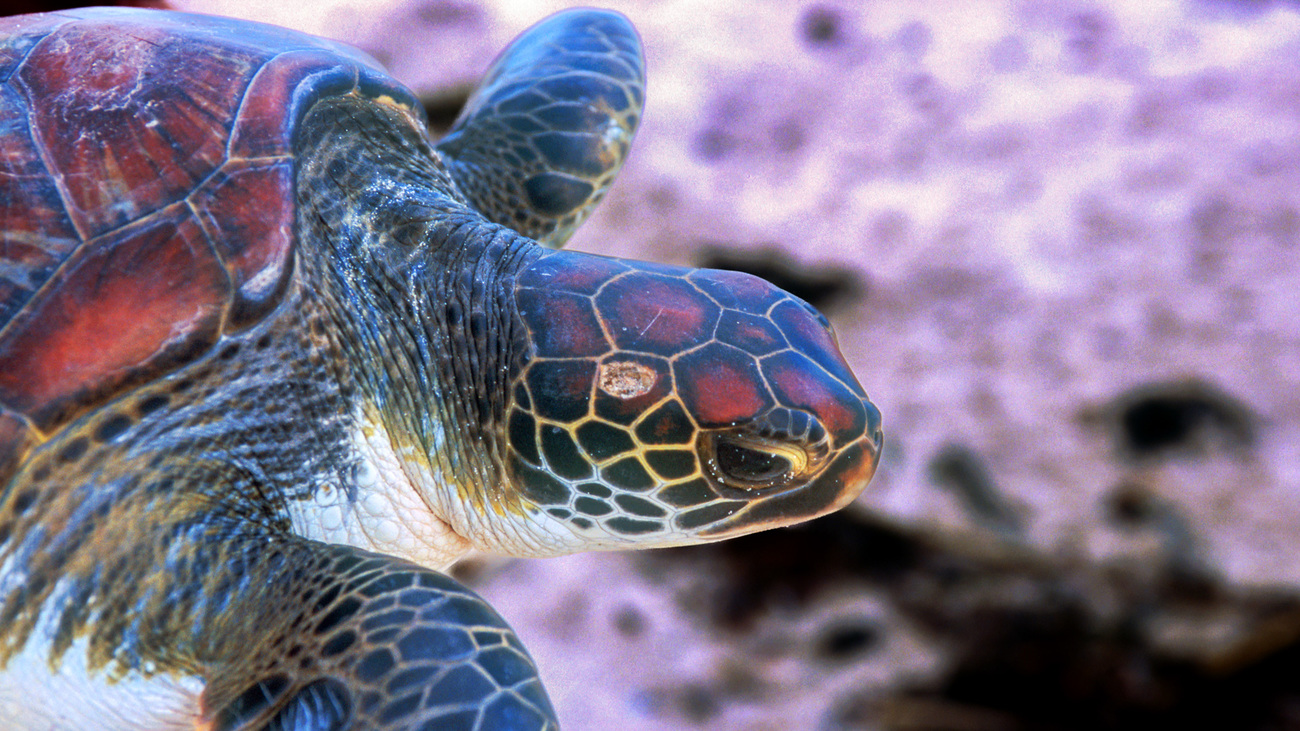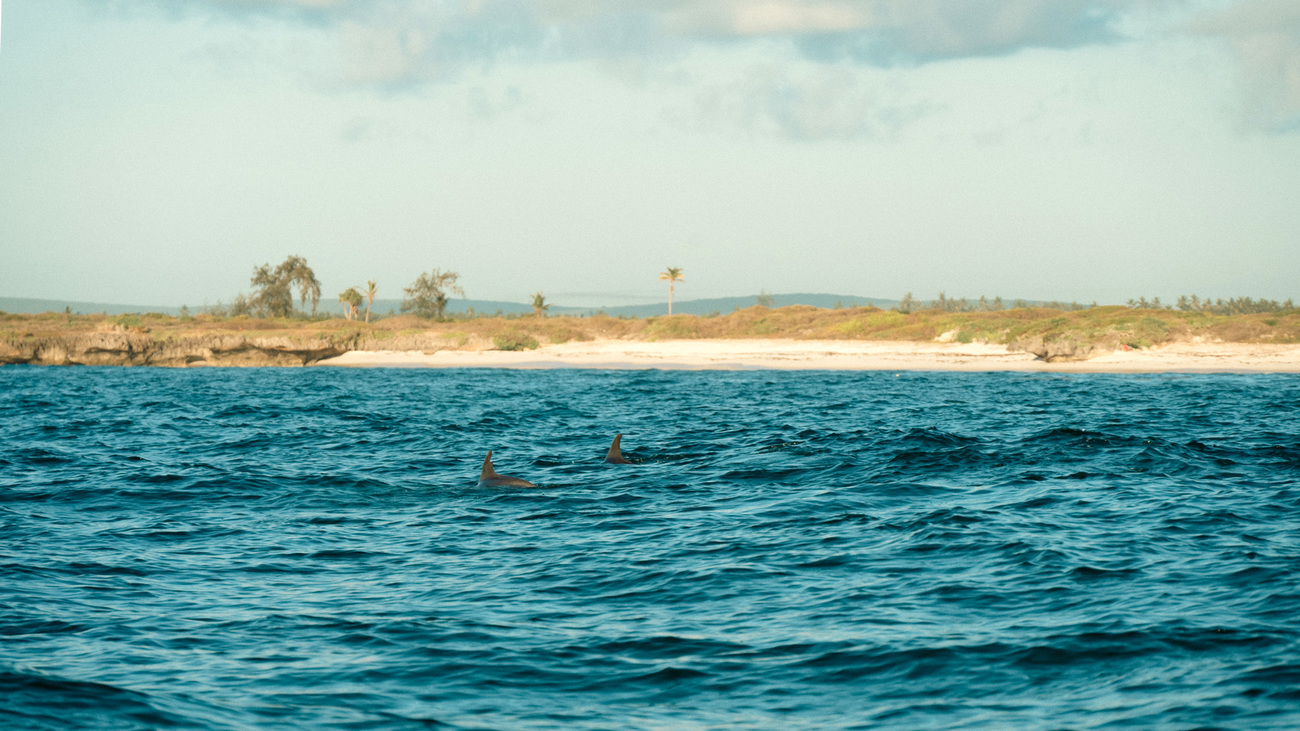Safeguarding coastal ecosystems in Kenya
Conserving Kenya’s marine lifeKenya’s coastal communities learn to rescue stranded dolphins and whales
Kenya’s coastal communities learn to rescue stranded dolphins and whales
When people think of Kenya, safaris, wildlife, and breathtaking landscapes may come to mind. But did you know that some of the country’s most precious treasures are found below sea level? Kenya boasts over 600 kilometres (370 miles) of picturesque white sandy beaches, fringed by swaying palm trees and warm Indian Ocean waters. These waters provide a haven for marine life like whales, dolphins, and sea turtles, and they also serve as a lifeline for community livelihoods.
Supporting fishermen, tourism, and a healthy planet
Every morning at Turtle Bay Beach in the coastal Kenyan town of Watamu, local fishermen update a simple blackboard advertising their catches of the day—tuna, prawns, crabs, and fish, all listed in chalk and illustrated with beautiful drawings. A hundred metres away, boat owners persuade groups of tourists to join them for scenic dolphin watching cruises in Watamu Marine Park. Without a healthy and thriving Indian Ocean, these individuals would be rendered instantly jobless.
Besides supporting economic growth and livelihoods, these waters also help to keep the climate in balance. Marine mammals like the dolphins and whales found along the Kenyan coast make up the world’s greatest carbon sink. One whale sequesters about 33 tonnes of carbon dioxide annually. A tree, on the other hand, sequesters about 0.02 tonnes per year.

Strandings on the rise
Sadly, East Africa’s seascapes are being stressed by increased marine transport activity, overexploitation, climate change, plastic pollution, and ocean exploration. One marker of these issues is the upward trend in the number of reported strandings of marine mammals. According to a study by Kenya Marine Mammal Research and Conservation, between 2004 and 2019, a total of 25 dolphin and whale strandings were reported along the Kenya coast. That equates to an average of fewer than two strandings per year. However, in 2020 alone, there was a spike in strandings, with 12 reported incidents along the Kenyan coast. In 2021, that number rose to 18. In 2024, 17 cases have already been reported—yet we’re only halfway through the year.
Left unaddressed, marine mammal populations here will dwindle, which would devastate community livelihoods and undermine the carbon-sinking capacity of the ocean. But armed with the right tools and training, these communities can turn the tide on species decline by saving entangled whales and stranded dolphins.
Marine mammal rescue training benefits communities
That’s why in March 2024, IFAW facilitated the first marine mammal rescue workshop in Kenya. We invited 40 local key players in the marine space along the Kenyan coast to participate: fishermen, beach management units, members of dive clubs and community-based organisations, rangers working within Kenya’s marine parks, and officials from the Kenya Marine and Fisheries Research Institute (KMFRI).
Led by Brian Sharp, IFAW’s director of Marine Mammal Rescue, the world-class training brought participants up to speed on the best practices in whale management and conservation.
The first day of the training was a theoretical masterclass illuminating the threats facing marine life in East Africa and elevating the urgent need to respond to strandings and entanglement reports in a manner that prioritises the safety and welfare of marine life. Rescuing an animal that is 15 times the size of an average human is no small feat, especially when it’s stressed. Fishermen were taught to grab hold of the tangled fishing lines using a simple grappling hook and attach buoys to the fishing gears to keep the whale at the surface, reducing chances of it taking a deep dive that could pose a danger to fishermen. This technique allows the team to catch up to the entangled whale in a small, inflatable boat. From there, the trainees were shown how to stand in a steady position and throw the grapple towards the closest fishing line. The remaining two days saw the facilitators take trainees through on-water and on-beach technical exercises, applying the skills learned on the first day.

‘I come from a fishing family,’ said Yahya Idarus, chairman of Shella Beach Management Unit and a participant in the training. ‘This ocean means everything to us. If we fail to safeguard it, we will have no food and no income.’
The training taught him the correct technique to disentangle a whale and free it from fishing gear using a grapple and rope. When fishermen lose their gear at sea, they have lost their means to earn money and provide for their families. But with this simple and cost-effective method, communities can protect precious marine life and safeguard their livelihoods.
As the leader of a beach management unit, Yahya believes his newly acquired skills will enable him to expand his impact and influence behaviours at the grassroots level, changing mindsets of communities in Lamu County to better protect the ocean. ‘The bigger picture goes beyond rescuing whales and dolphins,’ he said. ‘It’s about making sure my community takes responsibility for marine conservation to help protect our future.’
Related content
Every problem has a solution, every solution needs support.
The problems we face are urgent, complicated, and resistant to change. Real solutions demand creativity, hard work and involvement from people like you.